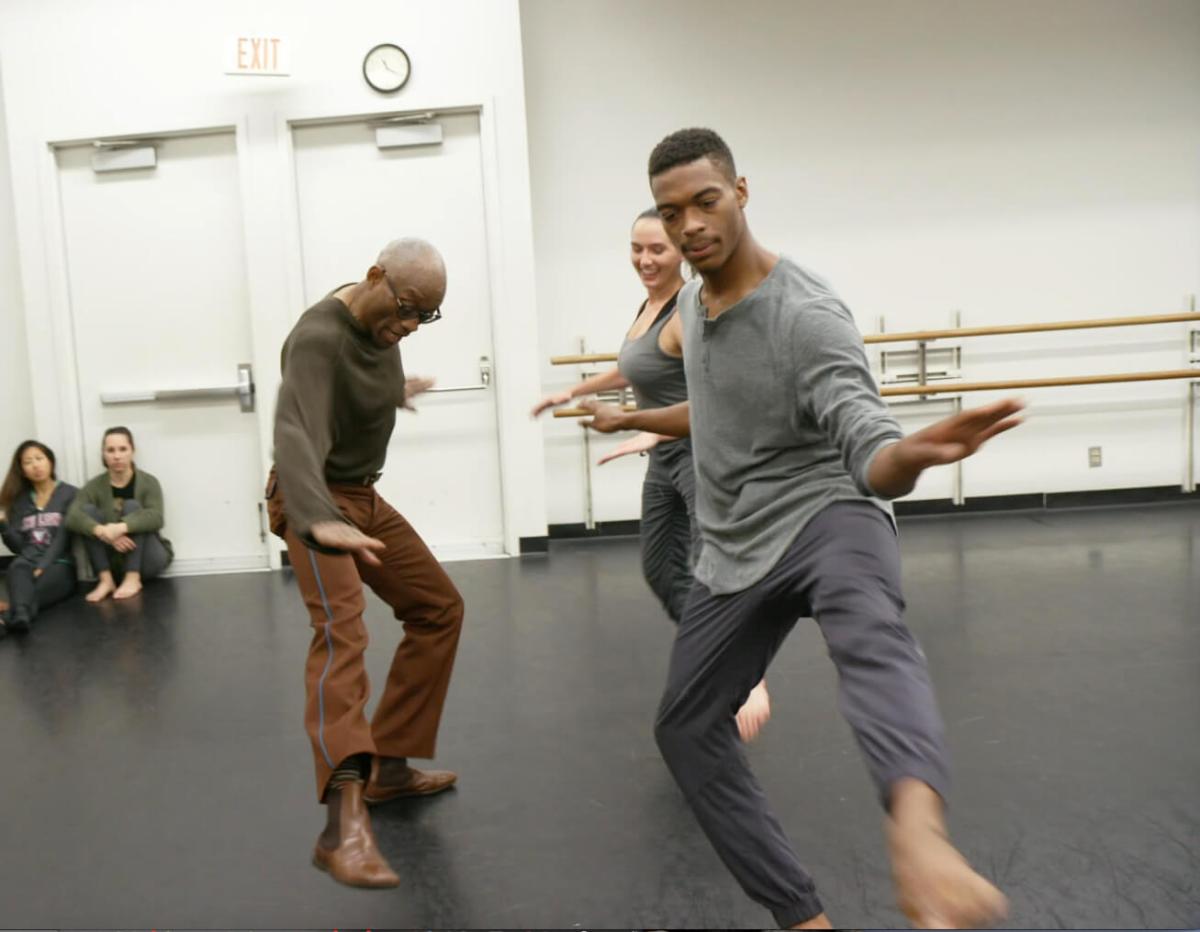The gifted, Tony Award-winning choreographer Bill T. Jones’s 1989 piece, “D-Man in the Waters,” was a response to the ongoing AIDS crisis. The modern dance honored not just Jones’ partner and artist collaborator, Arnie Zane, but was named for Demian Acquavella, one of the company members. Both Zane and Acquavella had succumbed to the AIDS.
The show is difficult for performers as it involves leaps and flight and dives. One company member, Gregg Hubbard, regrets trying a belly slide in a rehearsal because Jones incorporated the tricky move into the final production. However, the dance — which is described as being “more athletic than balletic” — is thrilling to watch as the many clips in the film attest.
“Can You Bring It: Bill T. Jones and D-Man in the Waters” is an inspiring documentary that recounts the original performance by members of the Bill T. Jones/Arnie Zane dance company as well as a new production by the students at Loyola Marymount University in Los Angeles. Their teacher, Rosalynde LeBlanc (the film’s co-director), was a former member of the Jones/Zane company, and considers the work to be Jones’ most successful dance. (An end credit indicates the piece has been performed by more than two dozen schools since 2010).
The film focuses mainly on mounting the student show, from the casting and rehearsals to a fascinating session where Jones talks with the young dancers after seeing them practice. There is a real somberness as Jones, with his deep, authoritative voice, describes what inspired him to create this cautionary tale. He references his ancestors and slavery and the tragedies that he and his fellow dancers shared during the height of the AIDS crisis, as well as the stigma of what Jones calls “the guilty disease.” What comes across in the film is how this work helped Jones and his company members process their overwhelming emotions of love and grief and loss.
After watching the students rehearse, Jones makes a suggestion to swap two dancers’ roles, which prompts LeBlanc to overhaul the production. The scenes of LeBlanc working with her student, Mateo, emphasize his commitment. In a dramatic moment, he shares a story about his transgender father.

“Can You Bring It” shows how LeBlanc tries to get her students to connect with the work and why “D-Man in the Waters,” still resonates. She has discussions with them about issues ranging from social media and gun violence. She illustrates “connectivity” through a dance exercise that involves each performer holding hands and moving or sitting. The impact of the activity is to demonstrate the sense of community that is critical for the company to excel in its work. However, it is an impassioned speech during a rehearsal just before opening that really motivates her students.
Her efforts are laudatory. LeBlanc is paying tribute here to Jones, her mentor. It may seem like a vanity production at times, but this feeling is offset by the other half of the film, which concentrates on the Jones/Zane company members reflecting on the original production.
The most moving passages of this documentary are when Jones and other dancers recall Demian Acquavella, whose impish spirit and devilish charms were infectious. Jones talks eloquently about the importance of having Acquavella on stage on opening night, even though the dancer’s body was ravaged by AIDS. Footage from this moment is quietly powerful.
Likewise, Dancer Seán Curran explains how he initially felt threatened when Demian joined the company, but when Jones made them partners for a duet that involved them touching foreheads (and never breaking) the dancers bonded. Moreover, Curran recounts some of the more amusing antics he and Acquavella got up to off stage, such as a time in a bar where they danced in kilts and accidentally on purpose exposed themselves. He also remembers the painful moment when he realized D-Man, as he was known, had AIDS. In contrast, Gregg Hubbard describes the bittersweet feeling of getting his first company job at the expense of Acquavella’s health issues, implying a sense of the continuing on as well as legacy.
But what may be the greatest strength of this memory piece is how it provides a glimpse into Jones’ artistic process. There are some fabulous archival scenes of “D-Man in the Waters” being performed that are echoed in the scenes of LeBlanc’s class recreating them. Watching the dancers moving in a line is poetry in motion, and a particular leap that scared Heidi Latsky in the original production is no less difficult for the Loyola Marymount students.
LeBlanc’s work with her students and with this film shows Jones’ impact and influence, and how much she has learned from him. “Can You Bring It” is a fitting homage to the extraordinary choreographer in general and the impact of “D-Man in the Waters” in particular. This celebratory documentary testifies to Jones’ singular contribution to dance.
CAN YOU BRING IT: BILL T. JONES AND D-MAN IN THE WATERS | Directed by Tom Hurwitz and Rosalynde LeBlanc | Opening July 16 at Film Forum | Distributed by Kino Lorber.

































